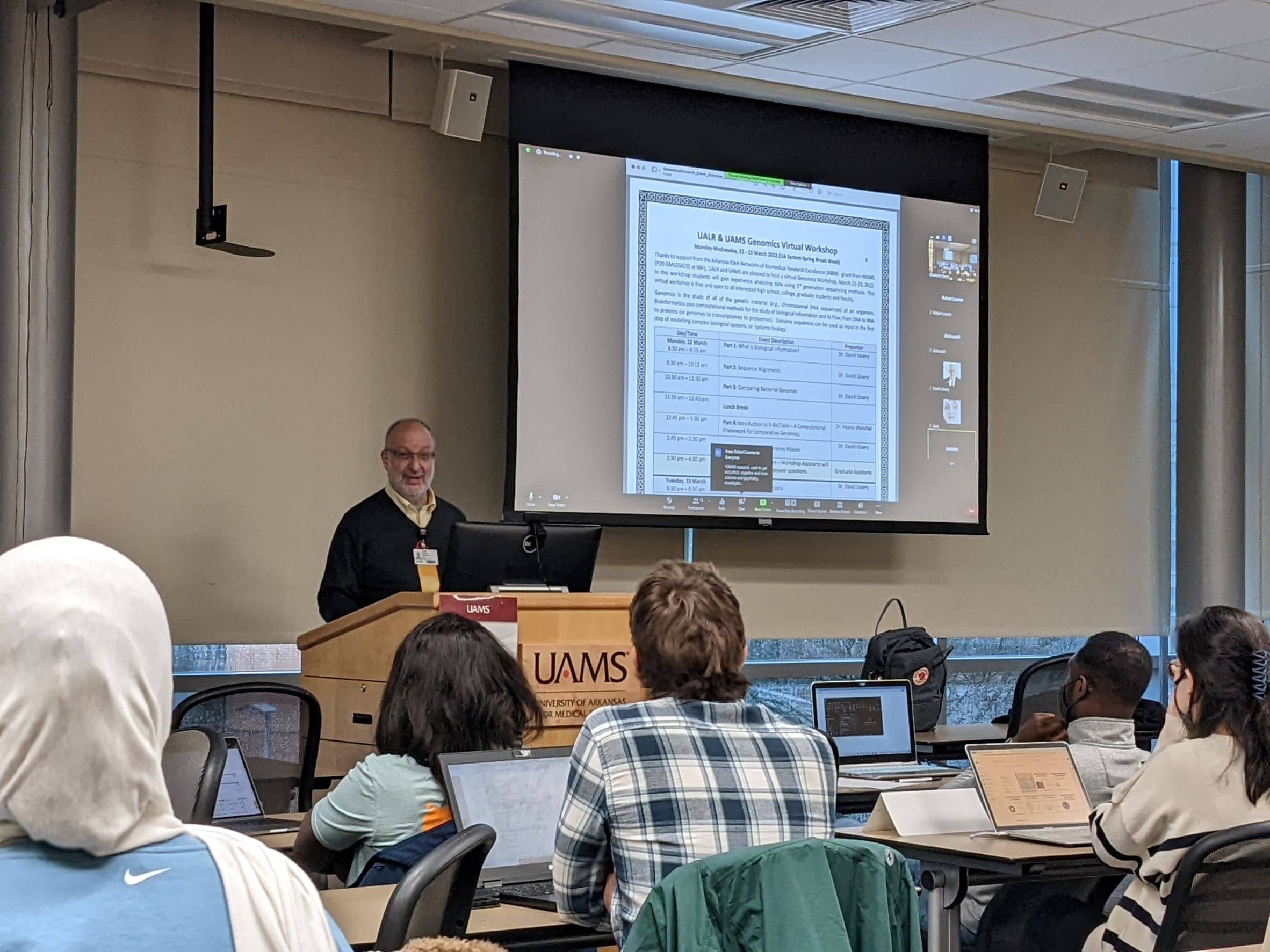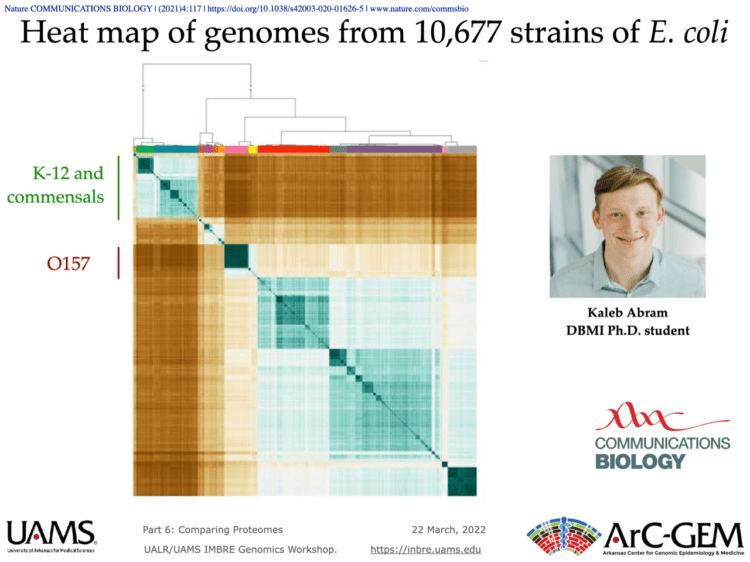Free Genomics Workshop at UAMS Brings Students from Across Arkansas
| Raymond Otoo was just starting the second day of a free three-day genomics workshop at the University of Arkansas for Medical Sciences (UAMS), but he was already seeing its value.
“This workshop is great for adding knowledge to my existing repertoire of bioinformatics,” he said during a break as attendees from schools across the state engaged in good-natured discussion amid hasty ingestions of coffee and pastry.

David Ussery, Ph.D., used a series of slides to illustrate the scientific advances in comparing genomes to help find areas of similarity and differences, which has implications for human health. This slide is comparing two E. coli genomes in 2001.
The annual spring break genomics workshops are sponsored by the Arkansas IDeA Network of Biomedical Research Excellence (INBRE), a National Institutes of Health-funded program based at UAMS that has partnered with colleges and universities across the state to expand and strengthen biomedical research.
“The technology is constantly changing, so these events are good to attend to keep yourself up to date,” said Otoo, a bioinformatics programming graduate of the University of Arkansas at Little Rock (UALR) and Ph.D. candidate at UAMS.
The workshop drew 48 Arkansas attendees (19 in person) from 10 schools, including high school, undergraduate and graduate students, as well as faculty. They represented disciplines ranging from wildlife and plant science-focused biology students to physics and computer science Ph.D. candidates.
Genomics has applications in multiple scientific fields. Its studies feature exploration into the function, structure, evolution, editing and mapping of genomes. A genome is the complete set of genes or genetic material in a cell or organism. Bioinformatics is a subdiscipline of biology and computer science.
Bioinformatics uses computational methods for the study of biological information that flows from the decoding and analysis of DNA, RNA and proteins.
“Bioinformatics has a wide range of applications,” said the event’s coordinator, Elizabeth Pierce, Ph.D. “The sequencing of complex biological data can be used for more than just medical research; it also fuels studies in agriculture, environmental sciences and biotechnology.”
Pierce is an associate professor and chair of the Department of Information Science at UALR. To organize this workshop, she partnered with UAMS’ David Ussery, Ph.D., director of the Arkansas Center for Genomic Epidemiology and Medicine. Ussery is a professor in the College of Medicine Department of Biomedical Informatics, and his research focuses on translational bioinformatics and high-throughput genomics. Ussery lectured on the history of genomic research as part of the workshop.
“Originally, we [scientists] thought that there were 10 million genes in the human genome. After beginning to attempt sequencing, that number dropped down to around 1 million genes,” Ussery said with a wry smile. “Then, for a long time, they thought ‘maybe it’s around 100,000 genes.’ Now that number is somewhere around 20,000, and everyone is sort of surprised. We thought we were a lot more complex than that.”
A few days after the workshop, researchers reported in Science magazine the full sequence of a single human reference genome, with plans in place to start mapping the immense genomic diversity within and between humans.
Attendees of the workshop found plenty to pique their interest.
“I’ve been curious about genomics since the first time I saw Jurassic Park as a kid,” said Booker Lytle, a Ph.D. candidate in computer and information science at UALR. “It was my first interest in the sciences, and while my current career path has steered me away from the field, meeting with students from other fields of study and seeing their unique approaches in the workshop, was especially enriching. I think these workshops, and the funding that make them possible, are invaluable in opening doors for interdisciplinary research.”
Arkansas INBRE is directed by UAMS’ Lawrence Cornett, Ph.D., distinguished professor in the College of Medicine Department of Physiology and Cell Biology. The INBRE network has three lead institutions – UAMS, University of Arkansas and UALR – and includes 17 primarily undergraduate institutions. In 2020, the program’s funding was renewed with a five-year, $18.4 million grant from the NIH National Institute of General Medical Sciences.

